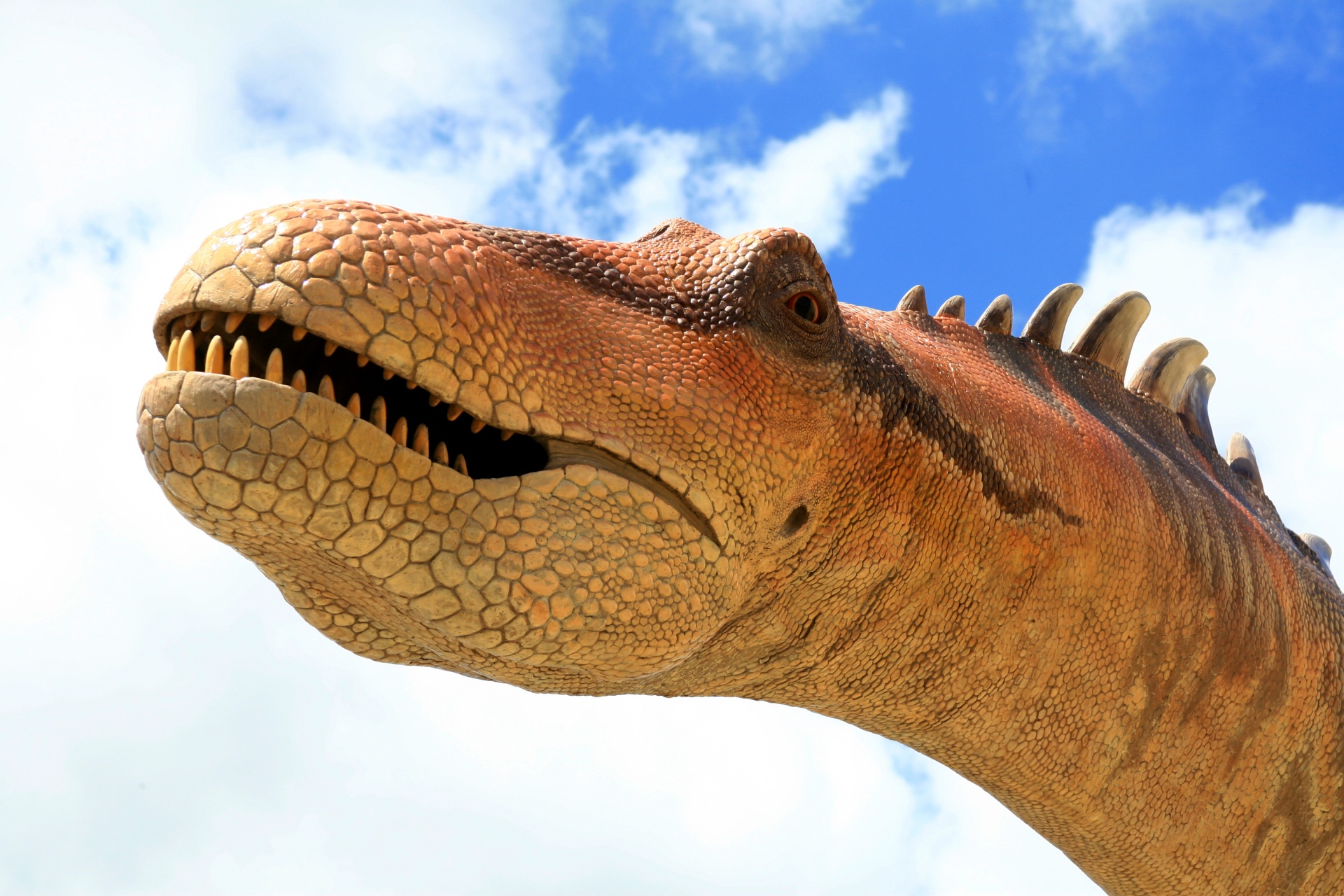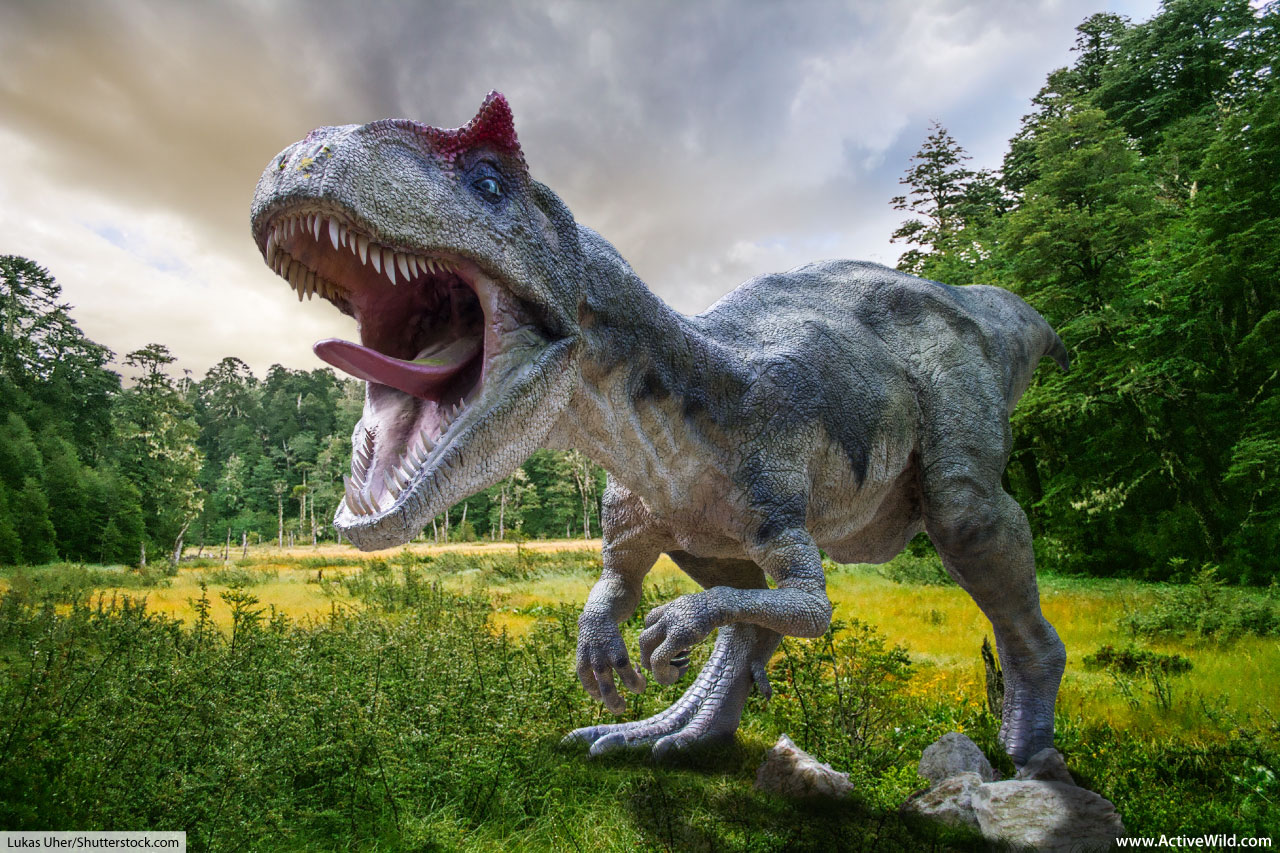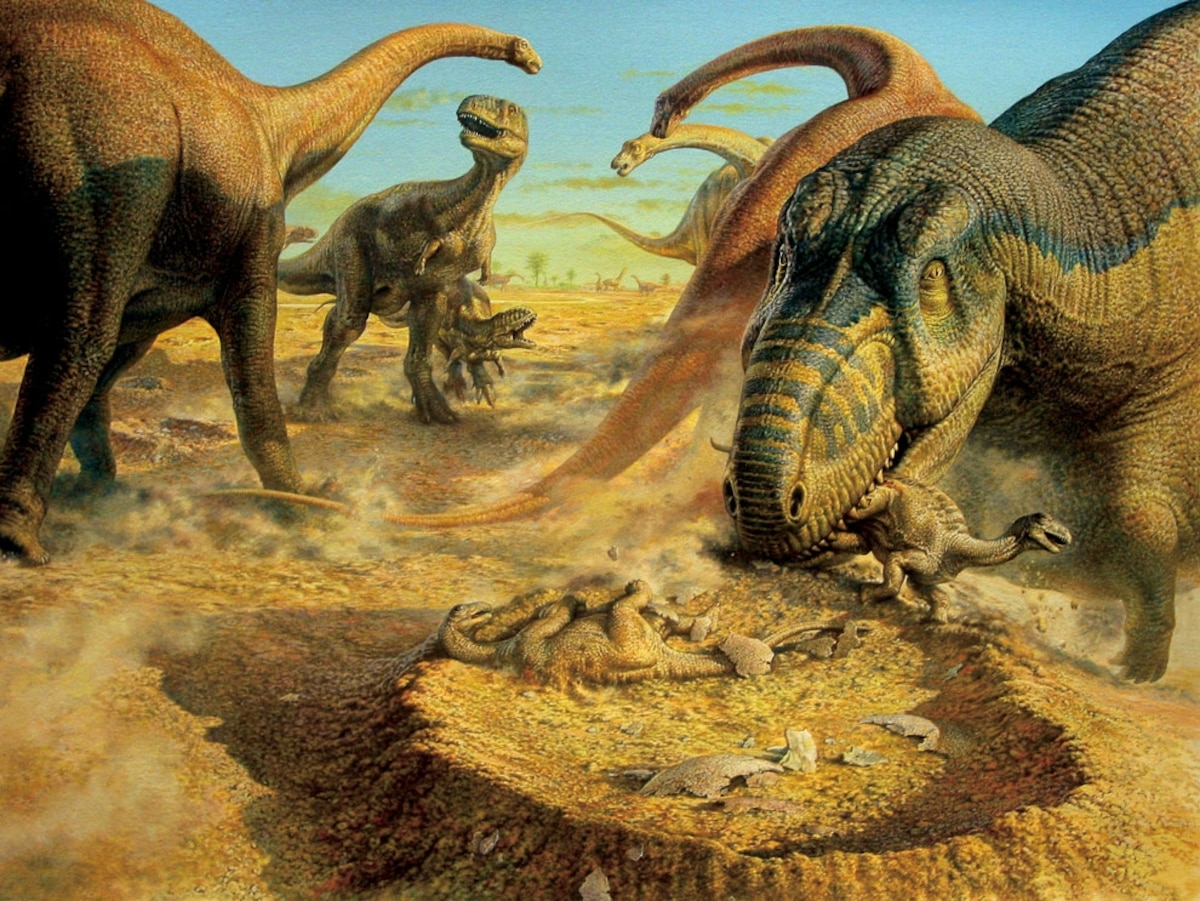Unveiling Nigersaurus: The Dinosaur With 500 Teeth
Table of Contents
- The Remarkable Discovery of the 500-Toothed Dinosaur
- Nigersaurus: A Sauropod Unlike Any Other
- The Astonishing Dental Battery of the Dinosaur with 500 Teeth
- Life and Times of Nigersaurus: A Cretaceous Herbivore
- Beyond the Teeth: Anatomy and Lifestyle
- The Broader World of Dinosaurs: From Discovery to Extinction
- Why the Fascination with the Dinosaur with 500 Teeth Endures
- Conclusion
The Remarkable Discovery of the 500-Toothed Dinosaur
The story of the "dinosaur with 500 teeth" begins not in a dusty museum hall, but amidst the vast, arid landscapes of the Sahara Desert. It was here, in the sun-baked sands of Niger, that French paleontologist Philippe Taquet made the initial groundbreaking discovery in the 1950s. While fragmented remains were found then, it wasn't until later expeditions, particularly in the 1990s, that more complete and astonishing fossils of this unique creature came to light. These subsequent findings, led by paleontologists like Paul Sereno, truly unveiled the full extent of Nigersaurus's peculiar anatomy, cementing its place as one of the most unusual dinosaurs ever unearthed.Unearthing Nigersaurus taqueti in the Sahara
The formal scientific name given to this incredible animal is *Nigersaurus taqueti*, a tribute to both the country where it was found and the pioneering paleontologist who first brought its existence to light. The Sahara Desert, though seemingly barren today, was a very different environment during the Cretaceous period, roughly 115 to 105 million years ago. It was a lush, swampy landscape crisscrossed by rivers, teeming with diverse plant life – the perfect habitat for a large herbivorous dinosaur. The discovery site in Niger has yielded a treasure trove of fossils, providing invaluable insights not just into Nigersaurus itself, but into the entire ecosystem that thrived in this ancient African environment. The process of unearthing such delicate and ancient bones from the harsh desert conditions requires immense skill and patience, often involving painstaking excavation techniques to preserve every fragment of evidence. Each bone, each tooth, tells a part of the story, allowing scientists to meticulously reconstruct the life and times of this extraordinary dinosaur. The initial fragments discovered by Taquet were enough to hint at something unusual, but it was the later, more comprehensive finds that truly allowed scientists to grasp the full, mind-boggling scale of its dental specialization. This ongoing process of discovery, from the first hint to detailed reconstruction, underscores the dedication of paleontologists in piecing together the Earth's ancient past.Nigersaurus: A Sauropod Unlike Any Other
In scientific terms, the "dinosaur with 500 teeth" is classified as a rebbachisaurid sauropod dinosaur. Sauropods are a group of long-necked, long-tailed, four-legged herbivores, famous for their immense size, including well-known giants like Brontosaurus and Brachiosaurus. However, Nigersaurus, while certainly a sauropod, stands out from its more famous relatives due to several distinct features, most notably its remarkably specialized skull and, of course, its unparalleled dental arrangement. It was not among the largest sauropods, estimated to be around 9 meters (30 feet) long, which is relatively modest compared to some of its truly gargantuan cousins. Yet, what it lacked in sheer bulk, it more than made up for in its unique approach to feeding. Its relatively small body size for a sauropod meant it likely occupied a different ecological niche than the towering browsers.Defining the Rebbachisaurid Sauropod
Rebbachisaurids are a family of sauropods that lived during the Early to Mid-Cretaceous period, primarily found in Africa, South America, and Europe. They are characterized by their relatively slender bodies and, in many cases, distinctive skull features. Nigersaurus is perhaps the most extreme example within this family, showcasing an evolutionary path focused on highly efficient, low-level browsing. Unlike many other sauropods that would have reached high into trees to strip leaves, the anatomy of Nigersaurus suggests a life spent grazing on ground-level vegetation. Its short neck, compared to other sauropods, further supports this theory. The skull of Nigersaurus was also remarkably light and delicate, a surprising feature for such a large animal, yet perfectly adapted for its unique feeding strategy. This delicate construction, combined with its massive dental battery, paints a picture of a highly specialized herbivore that meticulously processed vast quantities of plant material, a stark contrast to the more generalized feeding habits of many other sauropods. The discovery of various rebbachisaurids across different continents also provides valuable data for understanding continental drift and the dispersal of dinosaur species during the Mesozoic Era.The Astonishing Dental Battery of the Dinosaur with 500 Teeth
The most striking and defining feature of the "dinosaur with 500 teeth" is, without a doubt, its extraordinary mouth. This dinosaur’s skull was light as air but its mouth was packed with power—and a unique ability to quickly grow teeth. Nigersaurus possessed a dental battery, a feature more commonly associated with beaked herbivores like the ceratopsian Triceratops or the hadrosaur Edmontosaurus, but exceptionally rare among sauropods. Instead of a few large teeth, its jaws were lined with hundreds of tiny, needle-like teeth, constantly being replaced from behind. This incredible adaptation allowed it to efficiently process the fibrous plant material that formed its diet. The sheer number of teeth, combined with their rapid replacement rate, made Nigersaurus a highly effective grazer, capable of stripping vegetation with remarkable speed and precision.A Mouth Full of Power and Precision
To truly grasp the marvel of Nigersaurus's dentition, consider these astonishing figures: Nigersaurus had 60 columns of teeth in its upper jaw and 68 columns in its lower jaw. Each column contained multiple teeth stacked one behind the other, ready to erupt as soon as the tooth in front wore down or broke. This gave it a staggering total of over 500 teeth in its mouth at any given time. The teeth themselves were not designed for tearing or grinding in the conventional sense. Instead, they formed a self-sharpening, continuous cutting edge. As the outermost teeth wore down from constant grazing, new teeth from the columns beneath would rapidly push forward, replacing them within a matter of days or weeks. This rapid turnover meant that Nigersaurus always had a fresh set of sharp teeth, a crucial adaptation for a herbivore that relied on processing large volumes of tough plant matter. The entire dental battery was positioned at the very front of its broad, straight snout, suggesting it grazed like a vacuum cleaner, sweeping its mouth across the ground to snip off vegetation. This unique setup, a testament to evolutionary ingenuity, allowed the "dinosaur with 500 teeth" to thrive in its ancient environment, making it one of the most efficient plant-eaters of its time. The precision with which these teeth operated, shearing off vegetation without damaging the jaw structure, is a testament to the intricate biomechanics at play.Life and Times of Nigersaurus: A Cretaceous Herbivore
The life of the "dinosaur with 500 teeth" was intricately tied to the environment of the Early Cretaceous period. As a herbivore, its survival depended entirely on the availability of plant life. Its unique dental battery indicates a specialized diet: it was a low-browser, meaning it fed on plants growing close to the ground, such as ferns, horsetails, and possibly soft cycads. Unlike its towering sauropod relatives that might have stripped leaves from tall trees, Nigersaurus would have swept its broad snout across vast swathes of ground-level vegetation, efficiently cropping large quantities of food. This feeding strategy suggests it might have lived in open, swampy plains or river floodplains, where such vegetation would have been abundant. The ancient Sahara, where Nigersaurus lived, was a vibrant ecosystem. Fossil evidence from the same geological formations indicates the presence of other dinosaurs, including large predatory theropods like Carcharodontosaurus and Spinosaurus, as well as other herbivores. This means Nigersaurus would have been part of a complex food web, constantly needing to be aware of its surroundings. While its size offered some protection, its relatively short neck and likely slow movement would have made it vulnerable to ambush predators. The typical lifespan of a dinosaur, of course, depended on its size and species. For a sauropod of Nigersaurus's dimensions, it could have lived for several decades, perhaps up to 50-70 years, reaching maturity over a long period. Its constant tooth replacement system would have ensured it could maintain its feeding efficiency throughout its long life.Beyond the Teeth: Anatomy and Lifestyle
While its teeth are undoubtedly the star of the show, the rest of Nigersaurus's anatomy also offers fascinating insights into its lifestyle. Its skull, as mentioned, was remarkably light, featuring large fenestrae (openings) that reduced bone mass. This delicate construction, while surprising for a large animal, was perfectly suited for its grazing habits, minimizing strain on its neck muscles as it constantly swept its head across the ground. The neck itself, though shorter than many other sauropods, was still substantial, allowing for a wide arc of movement for feeding. The overall body plan of Nigersaurus was typical of a sauropod: a long tail for counterbalance, a barrel-shaped body to house its massive digestive system, and sturdy, pillar-like legs to support its weight. Its relatively small size for a sauropod (around 9 meters or 30 feet long) meant it wasn't the largest animal in its ecosystem, but its specialized feeding allowed it to carve out a unique niche. Scientists hypothesize that Nigersaurus might have lived in herds, a common behavior among large herbivores for protection against predators and for more efficient foraging. Moving in groups would have provided safety in numbers, with multiple eyes and ears to detect threats. The sheer volume of plant material required to sustain a large herbivore like Nigersaurus would have necessitated constant feeding, making its dental battery an indispensable tool for survival. Its flat, broad snout suggests a wide feeding sweep, allowing it to gather large quantities of low-lying plants with each pass, making it a true "lawnmower" of the Cretaceous.The Broader World of Dinosaurs: From Discovery to Extinction
The history of dinosaurs encompasses a long time period of diverse creatures, stretching for over 160 million years, from the Triassic through the Jurassic and Cretaceous periods. Discovering the "dinosaur with 500 teeth" is just one piece of the vast puzzle that paleontologists are continually assembling. Every year brings new insights and extraordinary dinosaur discoveries, from newly identified species to revised theories about their behavior, evolution, and eventual demise. For instance, recent research has shed new light on the evolution of iconic dinosaurs like T. Rex, suggesting that its direct ancestors might have migrated from Asia to North America, rather than the species evolving directly on the continent. This highlights the dynamic nature of ancient landmasses and the incredible journeys these creatures undertook.A Timeline of Diverse Creatures
The sheer diversity of dinosaurs is astounding. We've learned about new species like *Duonychus tsogtbaatari*, a therizinosaur with only two clawed fingers instead of the usual three, challenging our understanding of limb evolution. Another fascinating discovery involves a newly identified tyrannosaur species, the closest known relative of T. Rex, which could have been even larger than the famous dinosaur king itself. We've also learned about creatures like the "hug of death" megaraptorids and previously unknown carcharodontosaurs that shared Australia's unique Antarctic dinosaur ecosystem during the Cretaceous, painting a picture of incredibly varied global environments. This piece of art is a reconstruction of a late Maastrichtian (~66 million years ago) paleoenvironment in North America, illustrating the vibrant world these creatures inhabited right up until their extinction. From the colossal long-necked sauropods to the swift, agile raptors, and the heavily armored ankylosaurs, the dinosaur era was a time of unparalleled biological innovation and adaptation. Understanding the "dinosaur with 500 teeth" fits into this grand narrative, showcasing just one of the many unique evolutionary paths taken by these ancient reptiles.The End of an Era: Debunking Decline Theories
For a long time, a popular theory suggested that dinosaurs were already in decline before the asteroid impact that ultimately wiped them out. However, recent scientific consensus, supported by extensive fossil analysis, challenges this idea. Scientists now say that dinosaurs weren't in decline when an asteroid smashed into Earth and wiped them out. Instead, the idea that dinosaur diversity was declining before the asteroid struck 66 million years ago is largely being debunked. Evidence suggests that many dinosaur groups were still thriving and diversifying right up until the catastrophic event. The impact, which created widespread tsunamis, wildfires, and plunged the Earth into a prolonged "impact winter," was the sudden and decisive blow that ended their reign. This understanding underscores the immense power of singular, catastrophic events to reshape life on Earth, rather than a gradual biological decline. The story of the "dinosaur with 500 teeth" and its contemporaries reminds us that life on Earth, no matter how dominant, is always subject to the forces of geological time and cosmic chance.Why the Fascination with the Dinosaur with 500 Teeth Endures
Dinosaurs have long fascinated us with their immense size, unique features, and incredible adaptations. The "dinosaur with 500 teeth" stands out even among this remarkable group, captivating both paleontologists and the general public alike. Its bizarre dental battery is a powerful reminder of evolution's boundless creativity, demonstrating how life can adapt in the most unexpected ways to exploit available resources. The Nigersaurus is not just a scientific curiosity; it's a window into a world where the rules of biology seemed to be stretched to their limits. Its discovery and subsequent study have significantly enriched our understanding of sauropod evolution, particularly the lesser-known rebbachisaurid family. The detailed reconstruction of its skull and feeding mechanism has provided concrete evidence of specialized low-level grazing in large dinosaurs, filling a specific ecological niche that might otherwise have gone unappreciated. Moreover, the story of its discovery, from fragmented initial finds to comprehensive excavations, exemplifies the meticulous and often challenging work of paleontologists. It underscores the importance of continued exploration and research in remote and challenging environments. The "dinosaur with 500 teeth" is a testament to the fact that even after decades of dinosaur discoveries, there are still countless secrets waiting to be unearthed, challenging our assumptions and expanding our knowledge of Earth's ancient past. It continues to inspire awe and curiosity, prompting us to ask what other incredible adaptations might have existed in the deep history of our planet.Conclusion
The "dinosaur with 500 teeth," Nigersaurus, is truly one of the most remarkable creatures to have ever walked the Earth. From its initial discovery in the sands of Niger by Philippe Taquet to the detailed scientific analyses that revealed its extraordinary dental battery, its story is a testament to the wonders of paleontology. This rebbachisaurid sauropod, with its unique ability to rapidly replace hundreds of teeth, perfected the art of low-level grazing, carving out a specialized niche in the lush Cretaceous ecosystems of ancient Africa. Nigersaurus serves as a powerful reminder of the incredible diversity and adaptive ingenuity of dinosaurs, showcasing how evolution can produce truly bizarre and efficient solutions to the challenges of survival. Its existence enriches our understanding of when dinosaurs lived, how they adapted, and the complex ecosystems they inhabited, right up until their dramatic extinction. The ongoing discoveries of new species and the re-evaluation of old theories continue to paint an ever more vibrant and detailed picture of this prehistoric world. What do you find most fascinating about the "dinosaur with 500 teeth"? Share your thoughts in the comments below! And if you're hungry for more incredible dinosaur facts, be sure to explore other articles on our site that delve into extraordinary dinosaur discoveries and the latest dinosaur news, features, and articles from Live Science. The age of dinosaurs may be long past, but their legacy, and the secrets they hold, continue to unfold before our very eyes.
Dinosaur Free Stock Photo - Public Domain Pictures

Types of Dinosaurs: Dinosaur Families & Groups, Examples, Pictures

Dinosaurs Article, Dinosaur Modeling Information, Facts -- National